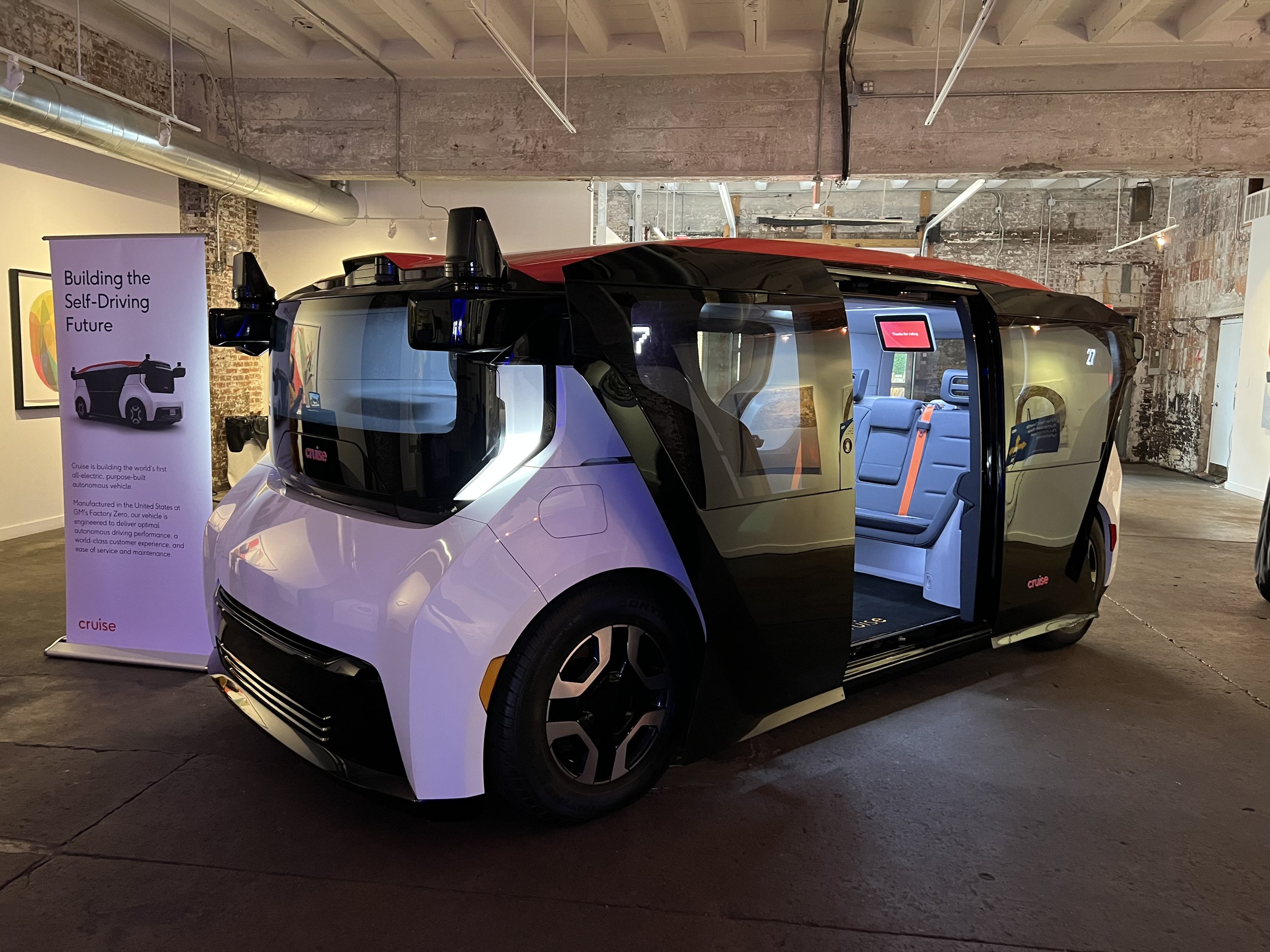First Look – GM Cruise Debuts Origin Vehicle on East Coast
📍Washington, DC
I had the unique pleasure of attending Axios x Cruise’s event, “A conversation on the U.S. autonomous vehicle industry”, where Cruise debuted its Origin prototype on the East Coast. The Origin vehicle was initially unveiled in 2020, immediately before the Pandemic, when the hope [read: hype] of autonomous vehicles and investment in ride-sharing were the highest.
Three years afterwards, the Cruise Origin vehicle, designed to be fully driverless, finally reached its way to the East Coast of USA.
The Cruise Origin vehicle prototype
Form Factor
Several companies, including Cruise, Zoox, Waymo, ZF & HOLON, have unveiled prototypes of purpose-built RoboTaxis and RoboShuttles. The Cruise Origin is a fully electric and driverless shuttle that has a boxy and upright shape that maximizes the interior space for passengers and minimizes the exterior footprint for city traffic.
It has no steering wheel, pedals or driver seat, but instead features two bench seats that face inward for up to four passengers. It has sliding doors that prevent collisions with cyclists and pedestrians when loading or unloading.
A special ADA-accessible variant has also been designed and prototyped to accommodate wheelchair users.
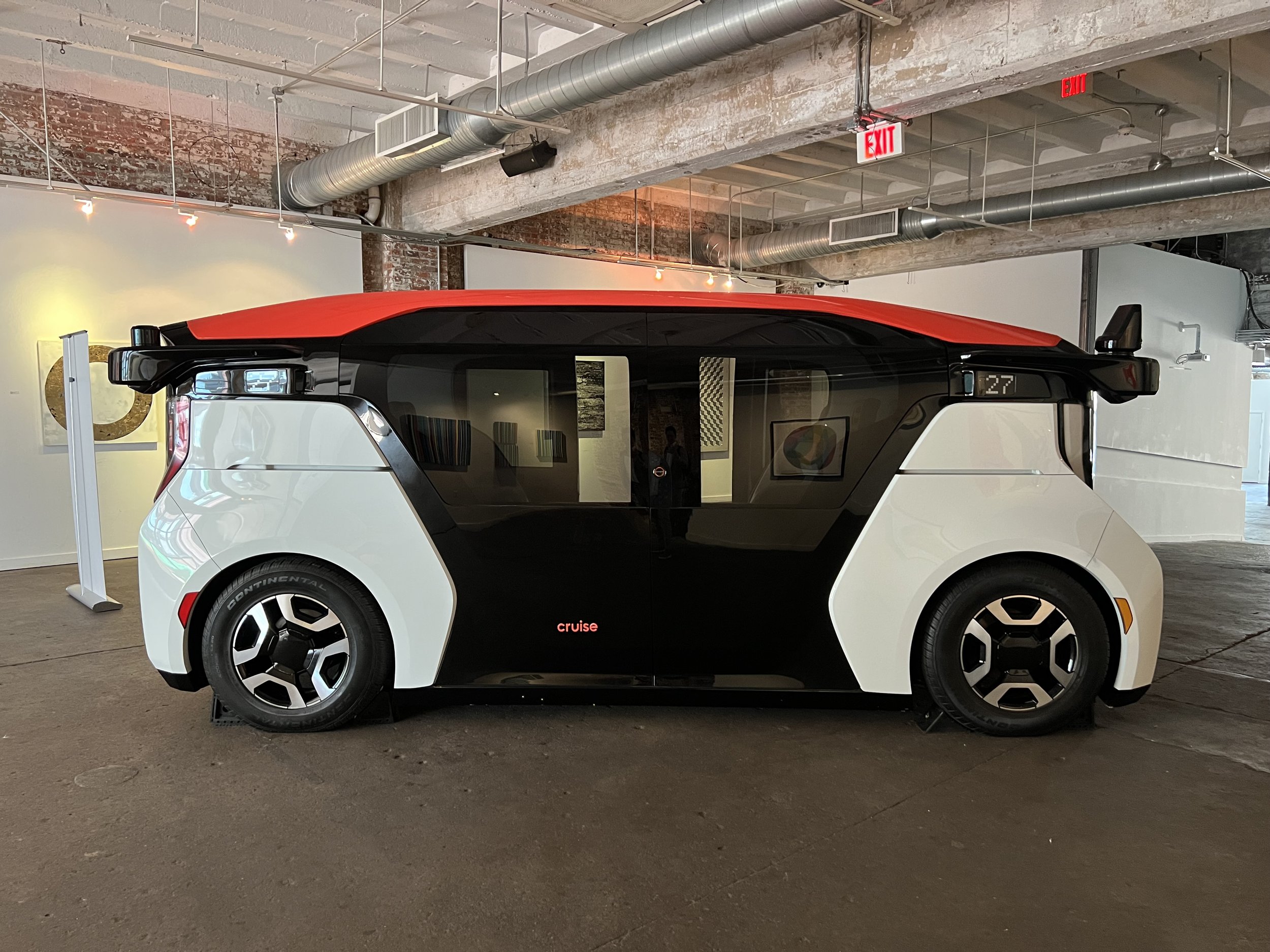
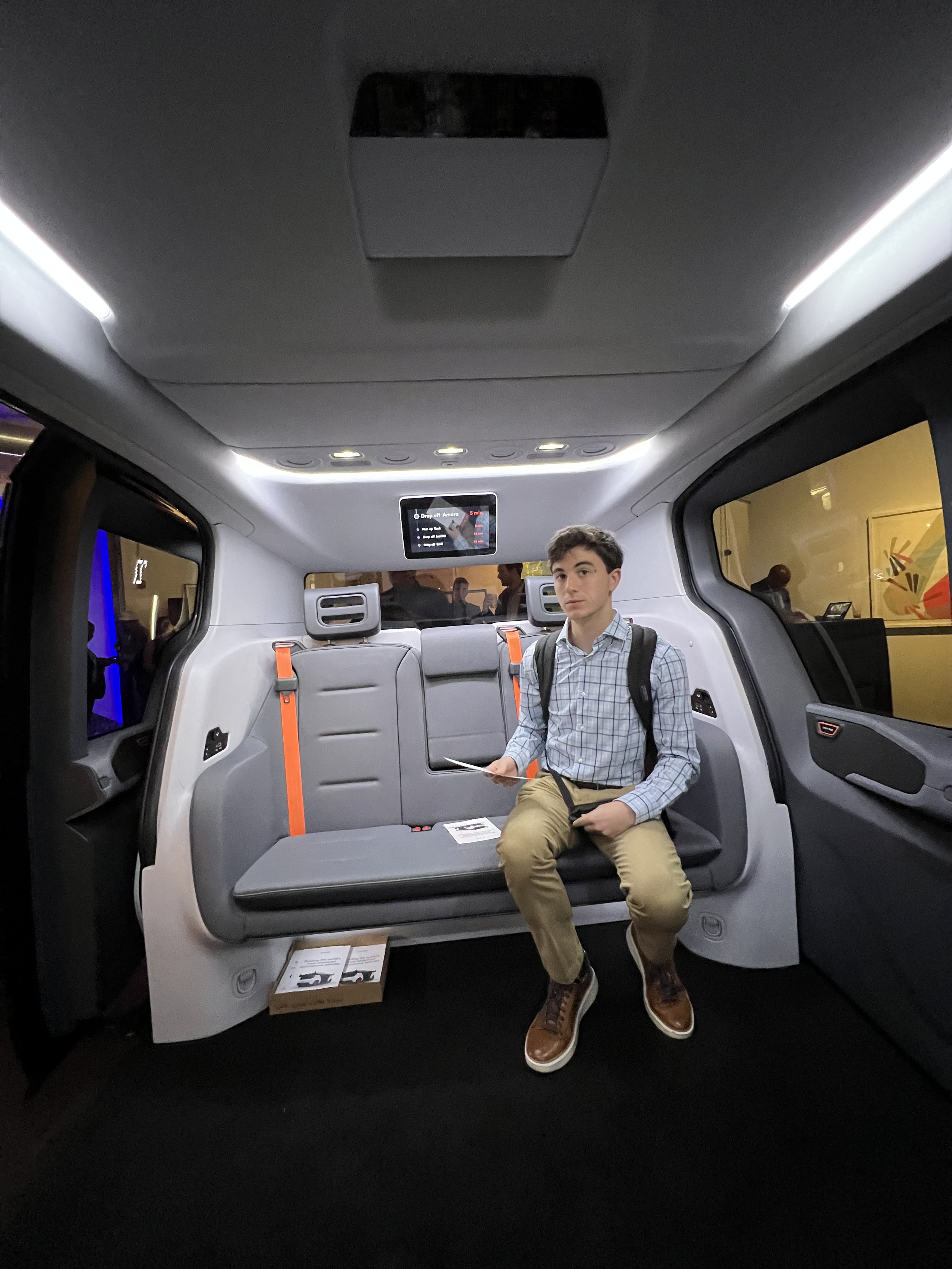

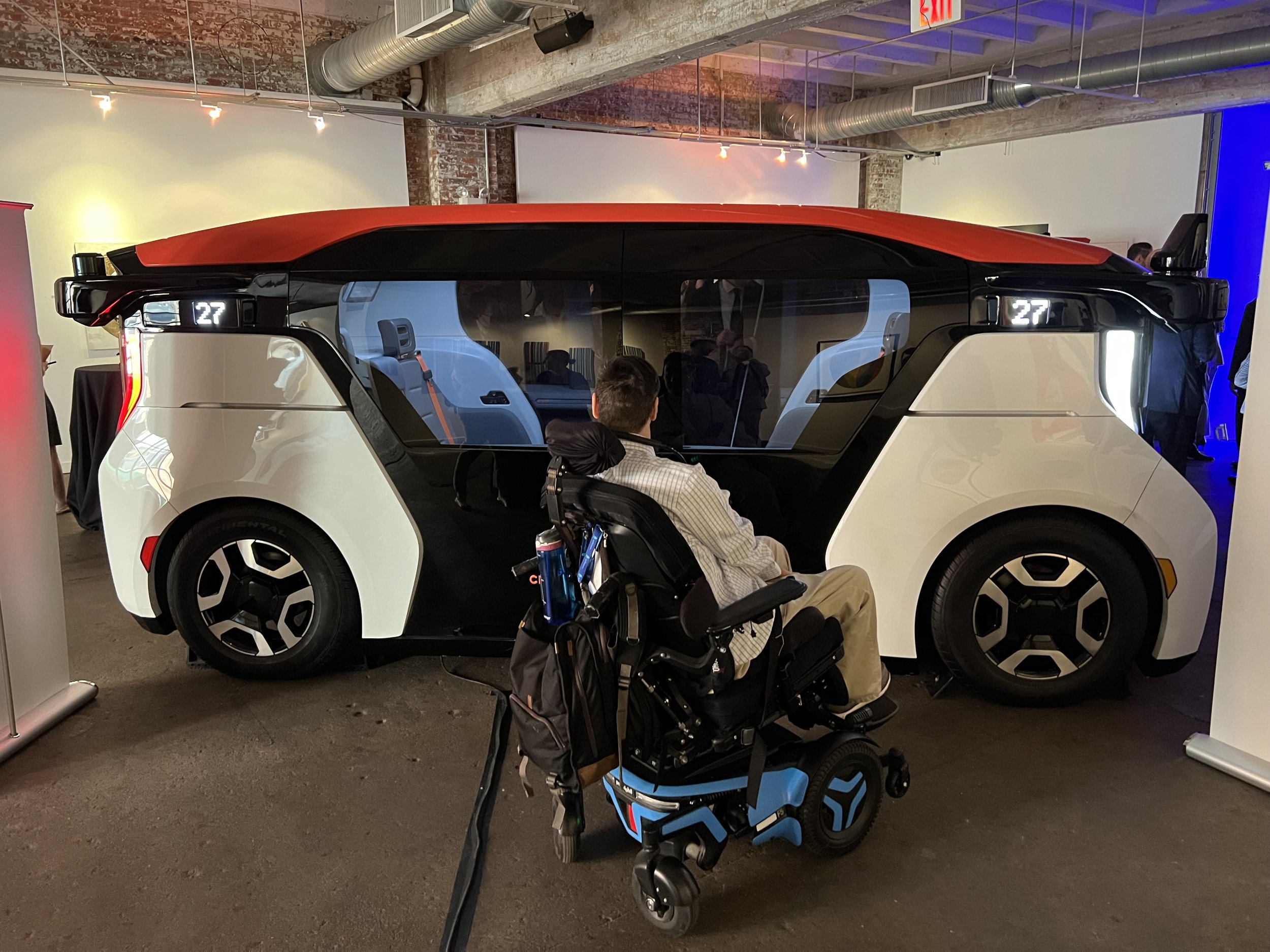
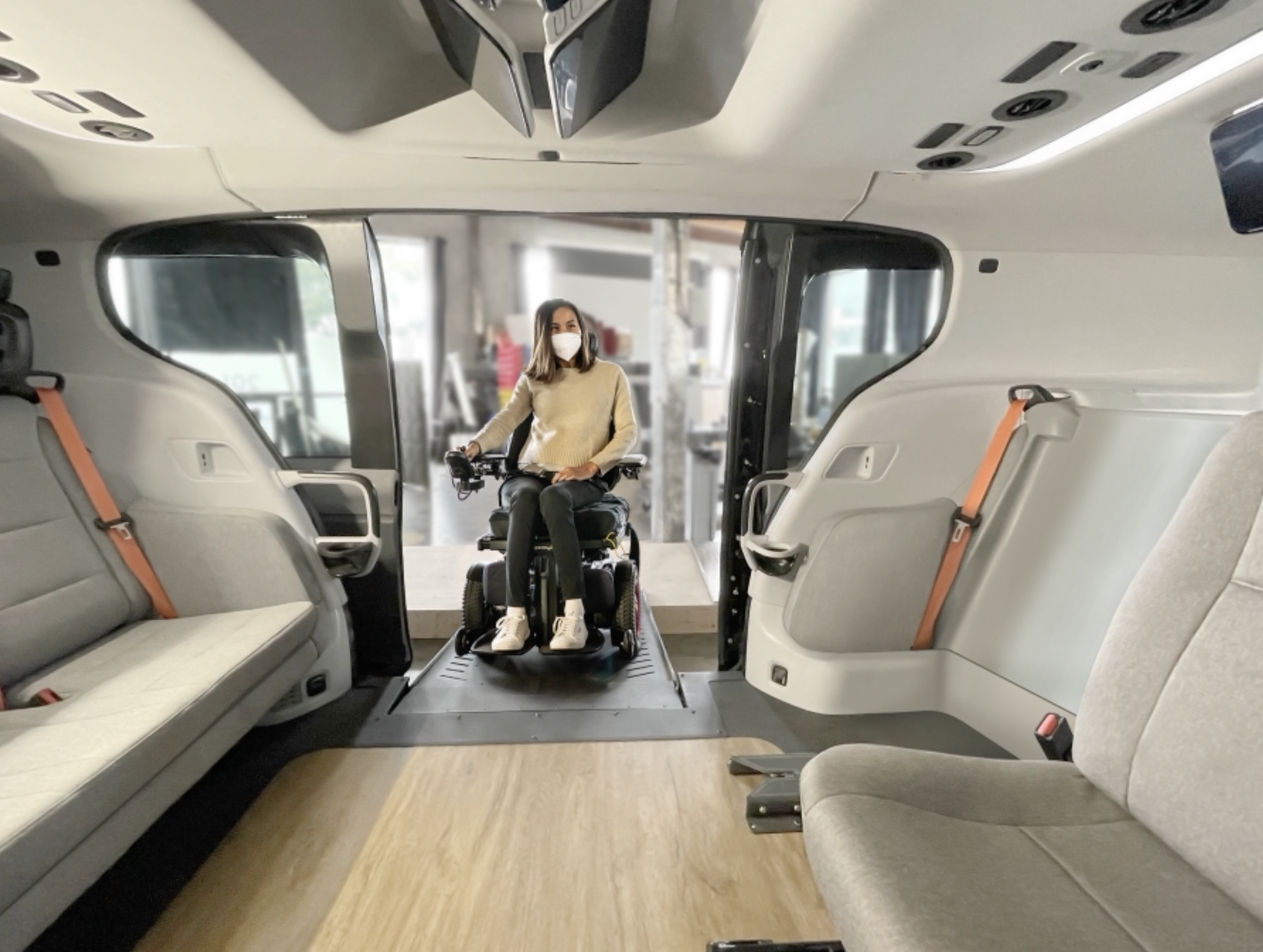
Interior
I was particularly impressed by the interior space of the Origin vehicle. When designing a vehicle with face-to-face interactions of complete strangers for ride-sharing applications, it is hard to balance efficiency, intimacy, and privacy.
The Origin Vehicle seems to have achieved the balance: it is spacious enough to accommodate four passengers, while leaving enough space between the riding parties. It could operate both as a “social condenser” to aggregate complete random parties together and spark new conversations and ideas, or as a private, enclosed space for one to relax after a day of work. The face-to-face configuration is significantly more spacious than similar configurations on Amtrak or NJ Transit trains, as a comparison.
Applications & Promises
On the road to autonomy, whose main society value is its affordability and scalability of mobility, there are three layers of critical components — software, hardware, and operations.
Waymo, the industry veteran, was the first to solve the software layer on October 2020 in Chandler, AZ, and have since expanded the Waymo One service to the entire Phoenix metro area; Cruise has also solved the “software” layer in November 2021, when it launched driverless rides in San Francisco and when Cruise co-founder Kyle Vogt took ride #1.
Form factors on existing robotaxis on public roads today, from left to right: ©Cruise (Chevy Bolt), ©Waymo (Jaguar I-Pace), ©Motional (Hyundai Ioniq 5)
On the hardware layer, most of the vehicles on the roads today are designed primarily for single-occupancy human-drivers, and the driverless robotaxis running on the public roads today, namely Cruise’s Chevy Bolt, Waymo’s Jaguar I-Pace, and Motional’s Hyundai Ioniq 5, while all being top-notch battery electric vehicles for humans to drive in, are not best suited to serve mobility-as-a-service. The Origin Vehicle is a good prototype that helps us envision a future of scaled operations of Autonomous MaaS on the hardware layer, particularly as it is backed by the manufacturing powerhouse of General Motors.
What’s left to the discussion is the operational layer to achieve full scalability promises of autonomous vehicles. We at CARTS have been quite vocal that private auto ownership is not the market for AVs to disrupt, but similar to SpaceX’s Starlink program delivering broadband to rural, underserved areas and Zipline drones delivering blood and time-critical materials in unpaved parts of Rwanda, autonomous vehicles are uniquely situated to provide high-quality, affordable mobility to meet the imminent mobility demands of many households and communities who have been left behind by our legacy transportation system — those who cannot or choose not to drive, and those who don’t have access to high-quality transit.
It is thus particularly refreshing to see the Cruise Origin vehicle on the East Coast, where can find clusters of communities who have limited access to high-quality mobility. Limited access = tremendous imminent mobility demand. Demand is on the East Coast, in the likes of Trenton, Detroit, North New Jersey, Jacksonville, Baltimore, Atlanta etc. Demand is all you need to deploy and scale autonomous mobility!

